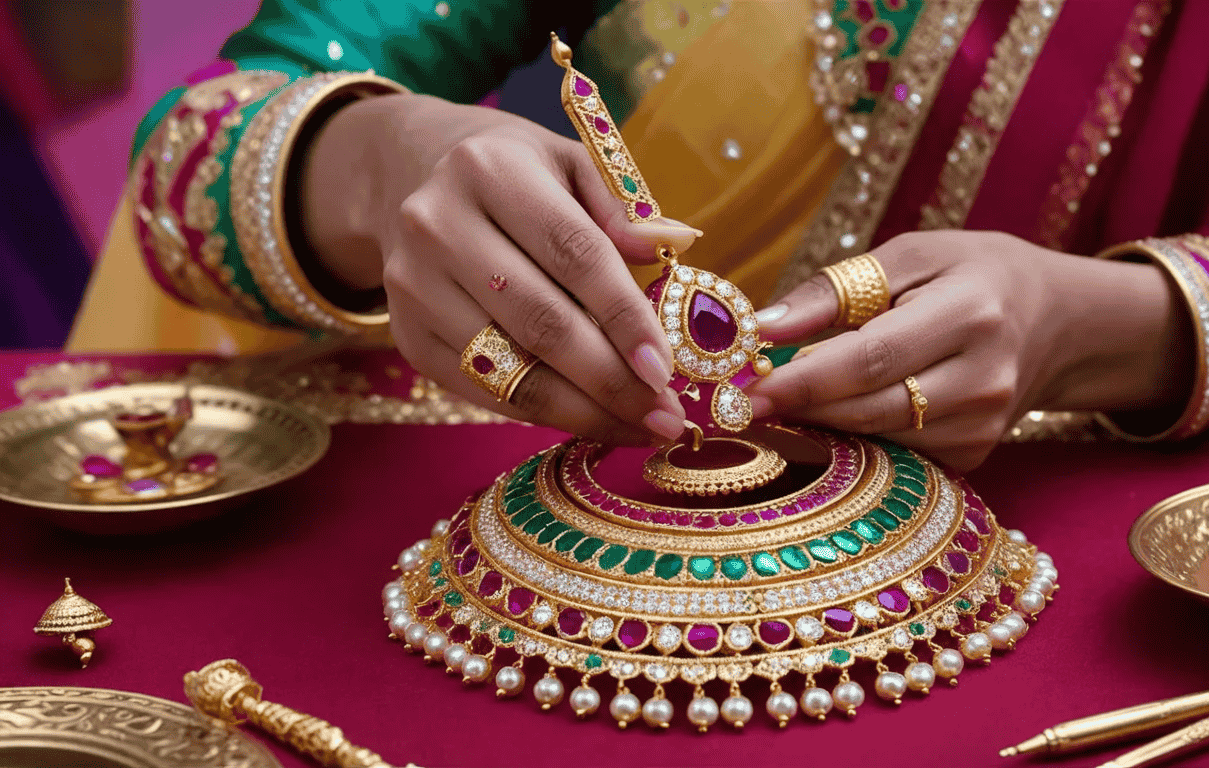ADORNING HERITAGE: THE REGAL SPLENDOR AND CULTURAL ESSENCE OF PUNJABI NATH
etBri Team

Nowadays, the Punjabi nath is more than just a traditional piece of jewelry; it's a trendy item on the international jewelry market. To cater to today's trendiest consumers, contemporary designers have taken classic styles and given them a contemporary twist by adding minimalistic details and fusion elements. All of these revisions haven't remodified the Nath's primal character; it's still a work of art that makes its owners feel like a dog with two tails. One example of magnificent and elaborate Indian jewelry is the
Punjabi Nath, a nose ring that represents the country's cultural wealth and classic beauty. This dilate item is a deep symbol of history, craftsmanship, and an article of faith; it is more than simply an appurtenance. The nath is a jutting-out wedding accessory in Punjab, a quarter known for its lively traditions and cultural celebrations. In most cases, the bride's in-laws will present her with the nath as a wedding gift or as a cherished family vestige. The massive size, intricate carvings, jewels, and expensive metals that define a Punjabi Nath's design are immediately apparent. A big, circular nose ring is a surefire way to turn heads. The nath attaches to the hair with a delicate chain, lending it an air of majesty. The Nath underwent significant changes during the Mughal era, particularly in Punjab.

The Mughals, known for their opulent and refined way of life, brought ornate patterns and skilled workmanship to Indian jewelry, including the Nath. Around this time, the rich and intricate Punjabi Nath emerged as a result of the merging of Persian and traditional Indian styles. The Punjabi Nath embodies a whole shebang of symbolic and cultural values. It is a symbol of snob value, muliebrity, and married status. For many, the nath's round form represents the everlasting tie of marriage and all that it stands for. In the fullness of time, the Punjabi Nath has tarried steadfastly, enduring the ups and downs of diverse cultural trends. For years, the Nath has endured, maintaining its essential character, from its earliest days in Vedic civilization to the elaborate decorations it received from the Mughals. Every twist of the filigree, the sparkle of the diamond, and the shade of the enamel reflect cultural pride and centuries of handiwork, telling a story of artistic progression.
The skilled craftspeople have used their deft fingers and imaginative vision to make each Nath one-of-a-kind, a monument to the heritage and legacy of their forebears.